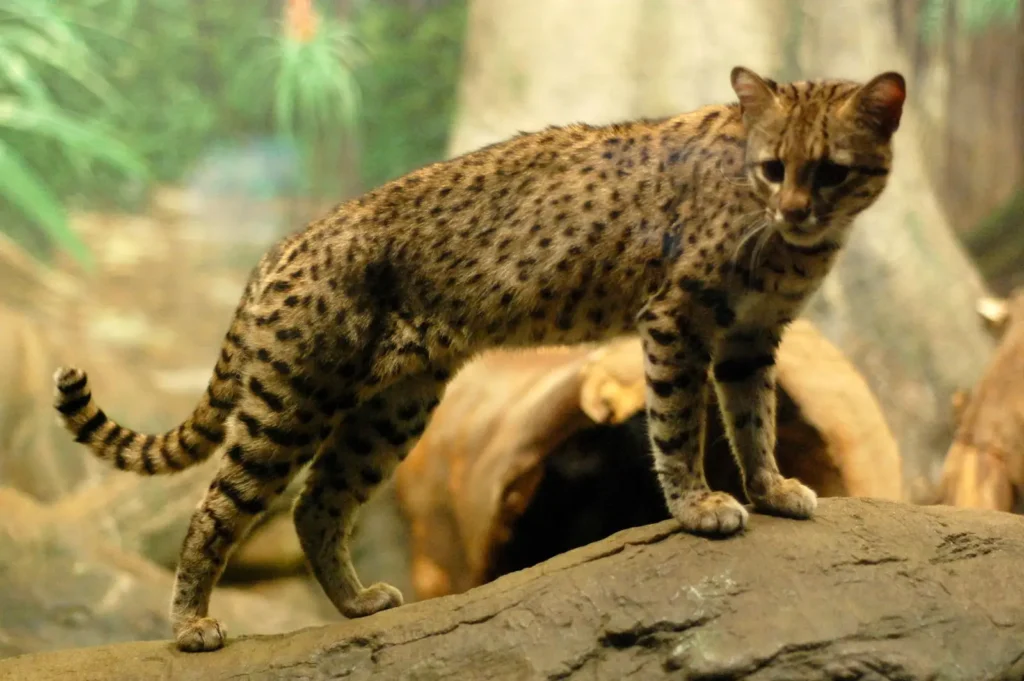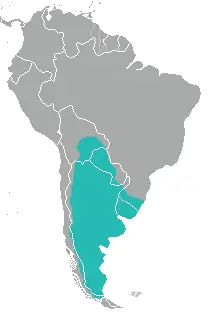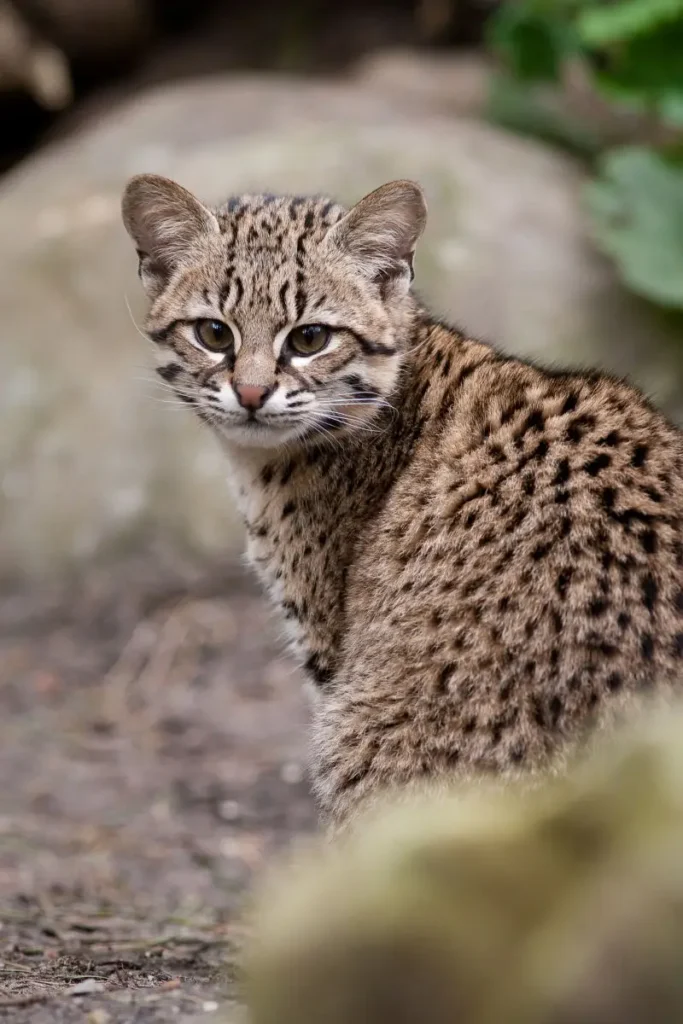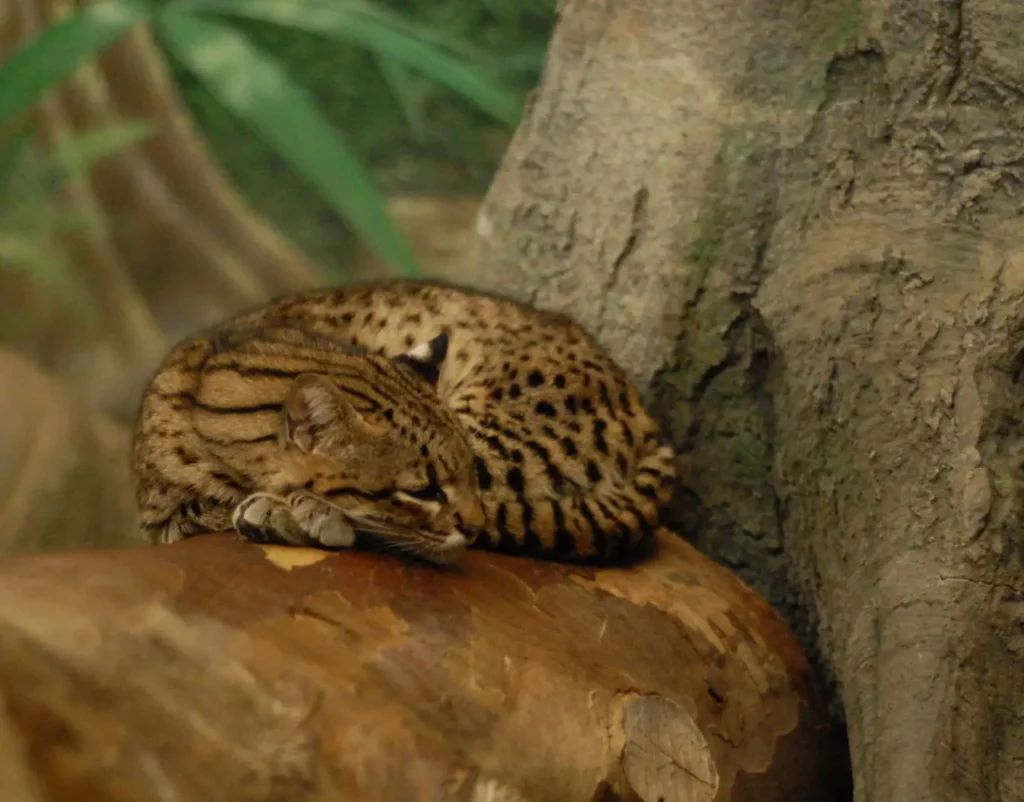The Geoffroy's leopard (Leopardus geoffroyi) is a small spotted cat found in South America. It is one of the smallest members of the cat family in its region, but it has extraordinary agility and endurance.

Classification and scientific name
• The Kingdom: Animals (Animalia)
• Type: Chordal (Chordata)
• Class: Mammals (Mammalia)
• Row: Carnivores (Carnivora)
• Family: Felidae
• Gender: Leopardus
• View: Geoffroy's leopard (Leopardus geoffroyi)
Physical characteristics
📌 Dimensions and weight
• Body length: 45-75 cm
• Tail length: 25-35 cm
• Weight: 3-7 kg
🎨 Colors and features
✔ It has a yellowish-gray or reddish color with dark spots all over the body.
The tail is long, with black rings and a dark tip.
Ears are rounded, with white markings on the back.

Range and habitat
🔵 Spread
✔ Argentina, Bolivia, Brazil, Chile, Paraguay, and Uruguay.
🔴 Living environment
From rainforests to semi-deserts and pampas.
✔ Can live in both mountainous regions and plains.
Lifestyle and behavior
🌟 Social structure
✔ Leads a solitary lifestyle, a territorial predator.
🌟 Activity time
✔ Mostly a nocturnal hunter, hiding in dense vegetation during the day.
Food and hunting
🍖 The main meal
The diet includes:
• Rodents
• Birds
• Reptiles
• Insects

🍴 Hunting methods
✔ Hunts from ambush using fast and accurate jumps.
✔ It has excellent hearing and vision, which helps it find prey even in the dark.
Reproduction and life cycle
❤️ Mating season: Mostly from fall to early winter.
❤️ Number of kittens in a litter: 1-3.
❤️ Life span: Up to 14 years in the wild, up to 20 years in captivity.
Natural enemies and threats
⚠ The main predators:
✔ Large birds of prey
✔ Cougars
⚠ Human threats:
✔ Deforestation and destruction of the natural environment.
✔ Hunting for valuable fur.

Interesting facts about the Joffrey leopard
✔ Swims well and is not afraid of water.
✔ Can climb trees, but hunts mostly on the ground.
Its spotted pattern is unique to each species, just like human fingerprints.
Conclusion
The Geoffroy's leopard is a hardy and agile predator that plays an important role in maintaining the balance of ecosystems in South America. However, due to threats from humans, its population needs to be protected and conserved.